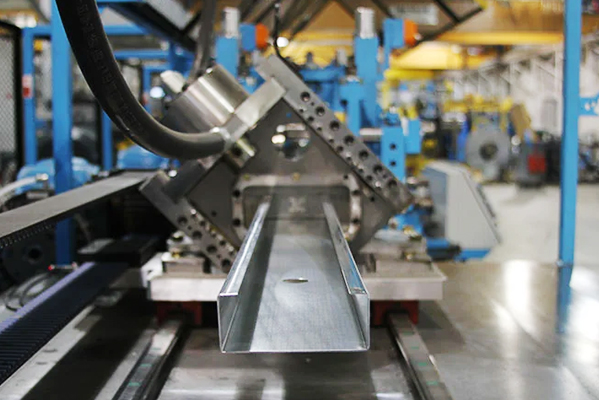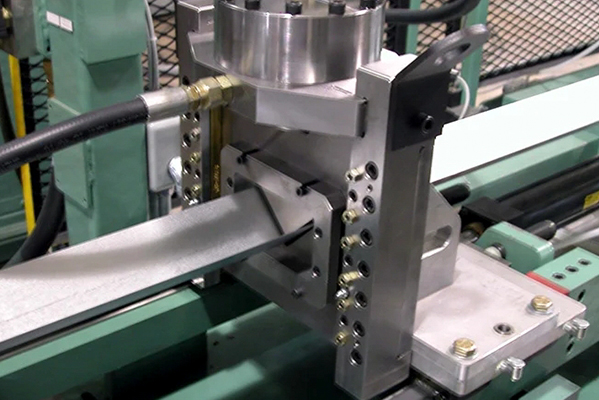Navigation Menu
Contact Us
- Email:
- info@wxavatar.com
- Address:
- Yurong Village, Yuqi Street, Huishan District, Wuxi, China.
Release Date:Mar 27, 2025 Visit:51 Source:Roll Forming Machine Factory
The Purpose of Steel Frame System Equipment: Building the Future
Steel frame system equipment lies at the heart of modern construction, serving as the backbone for creating resilient, efficient, and innovative structures. From towering skyscrapers to modular homes, this specialized machinery transforms raw steel into precise frameworks that define contemporary architecture. This article explores the core purposes of steel frame system equipment and its indispensable role in shaping the built environment.
1. Precision Fabrication of Structural Components
The primary purpose of steel frame system equipment is to manufacture steel components with unmatched accuracy. Advanced machinery ensures consistency and quality, which are critical for structural safety and performance.
Roll-Forming Machines: Convert steel coils into standardized profiles (e.g., C-channels, I-beams) through cold-forming processes, ensuring uniformity for load-bearing walls and floors.
CNC Laser Cutters and Plasma Cutters: Deliver millimeter-perfect cuts for complex joints and connections, minimizing material waste.
CAD/CAM Integration: Translates digital blueprints into physical parts, enabling mass customization for bespoke designs.
Example: In high-rise construction, precision-cut steel beams ensure seamless alignment, reducing the risk of structural weaknesses.
2. Accelerating Construction Timelines
Steel frame equipment streamlines both fabrication and assembly, drastically shortening project schedules.
Prefabrication: Components are manufactured off-site in controlled environments, allowing simultaneous groundwork and structural preparation.
Automated Assembly Lines: Robotic welders and fastener systems rapidly piece together modules, cutting on-site labor by up to 50%.
Modular Construction: Entire wall panels or floor systems are pre-assembled, enabling "plug-and-play" installation.
Impact: Hospitals and emergency housing projects leverage this speed to meet urgent deadlines without compromising quality.

3. Enhancing Structural Integrity and Safety
Steel’s inherent strength is maximized through purpose-built equipment, ensuring structures withstand environmental and operational stresses.
Galvanizing and Coating Systems: Apply anti-corrosive layers to steel components, extending lifespan in harsh climates.
Hydraulic Presses and Testing Rigs: Validate load-bearing capacity and durability before installation.
Seismic-Resistant Designs: Equipment produces flexible joints and reinforced frames to absorb earthquake forces.
Example: Steel frameworks in earthquake-prone regions like Japan integrate energy-dissipating connectors fabricated using specialized presses.
4. Promoting Sustainable Construction Practices
Steel frame equipment aligns with global sustainability goals by minimizing waste and supporting circular economy principles.
Material Efficiency: CNC machinery optimizes cutting patterns, reducing scrap steel by up to 30%.
Recycling Integration: Shredders and electric arc furnaces repurpose scrap into new components, lowering carbon footprints.
Energy-Efficient Production: Modern equipment, such as energy-saving roll formers, reduces power consumption during manufacturing.
Impact: LEED-certified buildings often rely on steel frames for their recyclability and compatibility with green technologies like solar panels.
5. Enabling Architectural Innovation
Steel frame systems empower architects to push design boundaries, thanks to the flexibility of advanced equipment.
Custom Profiles: Adjustable tooling in roll-forming machines creates curved or angled beams for avant-garde façades.
Light-Gauge Steel (LGS) Systems: Thin, high-strength profiles allow open floor plans and cantilevered designs.
Hybrid Structures: Equipment facilitates combining steel with materials like timber or glass for aesthetic and functional synergy.
Example: The iconic "Bird’s Nest" Stadium in Beijing used custom steel trusses fabricated using automated bending and welding systems.

6. Reducing On-Site Hazards
By shifting fabrication to controlled factory settings, steel frame equipment mitigates traditional construction risks.
Fewer On-Site Activities: Pre-assembled modules reduce the need for hazardous tasks like welding at heights.
Consistent Quality: Factory-controlled processes minimize defects that could lead to structural failures.
Conclusion: Building Smarter, Stronger, and Greener
Steel frame system equipment serves as a catalyst for progress in construction, addressing the demands of speed, safety, sustainability, and creativity. By enabling precise fabrication, rapid assembly, and resilient designs, this technology not only meets the challenges of today but also paves the way for tomorrow’s innovations—from smart factories with AI-driven machinery to carbon-neutral steel production. As urbanization intensifies and environmental concerns grow, steel frame systems will remain central to constructing a sustainable and dynamic future